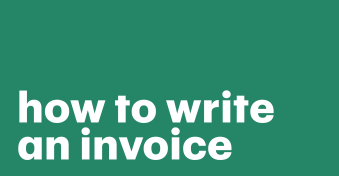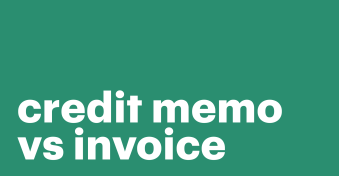Billing is a key process for any business.
After all, it’s hard to grow your business if you’re not getting paid.
That’s why we’re here to explain statement billing vs invoice billing.
We’ll look at invoices and billing statements, covering what they do, the differences between them, and what to include to get paid on time.
What’s an invoice?
An invoice is a document submitted to a customer by a business.
It details a transaction, including goods and services provided, and the payment owed to the invoice issuer.
An invoice statement represents a liability of the customer and an asset of the issuer. It’s evidence of a transaction and a formal reminder to make payment.
Invoices may be hand delivered alongside the goods or services provided or sent by mail or email.
Many businesses use automated sales invoice software to speed up the process of creating and sending invoices.
What’s a billing statement?
A billing statement is a document which lists multiple transactions between a business and customer over a set period of time.
They’re often used when sales are made on credit, and provide details about both paid and unpaid invoices, including an ending balance.
Because they list multiple transactions, they often include less detail about each transaction than an invoice.
The difference between invoices and statements: When to use each
Invoices typically request payment for one specific transaction, whereas billing statements provide an overview of a customer’s account activity.
Another example of a difference between an invoice and a statement is when they’re issued.
You would normally issue an invoice immediately after a product or service has been supplied.
Statements, however, can be sent at regular intervals regardless of account activity, to provide regular account updates.
What to include in statement billing
A billing statement should include important details, including:
- The dates of the billing cycle.
- The dates and invoice numbers of individual transactions. These details help the customer compare against invoices received.
- Opening and closing balance. This tells the customer how much they owed or were in credit at the start of the billing period, and again at the close.
- Payment terms and due date. This lets the customer know when payment is expected and how to pay.
Billing statements should be clear and concise, with both parties able to see all the important details at a glance.
What to include in invoice billing
Because invoices cover one specific transaction, they tend to include more detail than a billing statement, including:
- Customer name and number.
- Invoice number. For tracking individual invoices through payment systems, and provides a number which can be included on billing statements for reference.
- Purchase date.
- Product name and number.
- Quantities of each product and their per-unit cost.
- Invoice subtotal, before shipping charges and any applicable taxes.
- Applicable sales taxes.
- Shipping charges.
- Invoice total. Including a final total in larger print at the bottom of the invoice leaves the customer in no doubt about how much they owe in total.
The best invoicing software platforms will help you create comprehensive invoices that are easy to understand and contain all the necessary information.
Billing statement templates
Billing statement templates are available for Microsoft Word and Excel, although you may find you have to input data manually in order to generate them, which can be time consuming.
You may find that your accounting software provider offers billing statement templates that allow you to automatically build statements, saving a lot of time and effort.
Invoice billing templates
There are many invoice billing templates available online that can help you to create professional, easy-to-read invoices for a range of purposes.
PandaDoc has many invoice templates, most of which can be used for free. All you need to do is create an account.
There’s an invoice template for every scenario, including proforma invoice templates, VAT invoice templates, and past-due invoice templates.
Industry-specific templates are available if you need something that’s tailored to your needs, including painting invoice templates, rental invoice templates, and freelance invoice templates.
Easily create your statements and invoices with PandaDoc
Creating comprehensive, easy-to-understand billing statements and invoices help you look professional, and more importantly, help your customers pay you on time.
Understanding statement billing vs invoice billing should help you on your way.
PandaDoc can help, too. We offer a wide range of templates, helping you create every type of invoice you’ll ever need.
As document workflow software, PandaDoc also provides you with all the tools you need to create, manage, and even eSign documents with ease.
Sign up for a free 14-day trial now to see what all the fuss is about.
FAQs about statement billing and invoice billing
-
Statements provide an overview of a customer’s account activity, and act as a reminder that there’s a balance to be paid.
However, it’s invoices that are paid. They’re issued immediately after goods or services are provided and act as a bill to be paid for that specific transaction.
-
Invoice billing and statement billing serve different purposes. Invoice billing is better for itemizing a specific transaction and requesting payment for it.
Statement billing is better for providing a customer with an overview of their account and reminding them of any outstanding balance they need to pay.
-
There are numerous kinds of billing that a business can use:
-
- Milestone billing – An invoice is generated at a predetermined point in a project.
-
- Billing on completion – An invoice is generated and payment made once a product has been delivered or a service has been provided.
-
- Billing for on-going services – A recurring payment plan is used to take regular payments for an ongoing service, e.g. SaaS plans, cell phone contracts, etc.
-
-
A billing statement is not considered a legally-binding contract, as it does not prove an agreement between the issuer and the customer. Because billing statements and invoices are generated by a business and sent to a customer, they are considered one-sided documents.
Disclaimer
PandaDoc is not a law firm, or a substitute for an attorney or law firm. This page is not intended to and does not provide legal advice. Should you have legal questions on the validity of e-signatures or digital signatures and the enforceability thereof, please consult with an attorney or law firm. Use of PandaDocs services are governed by our Terms of Use and Privacy Policy.


